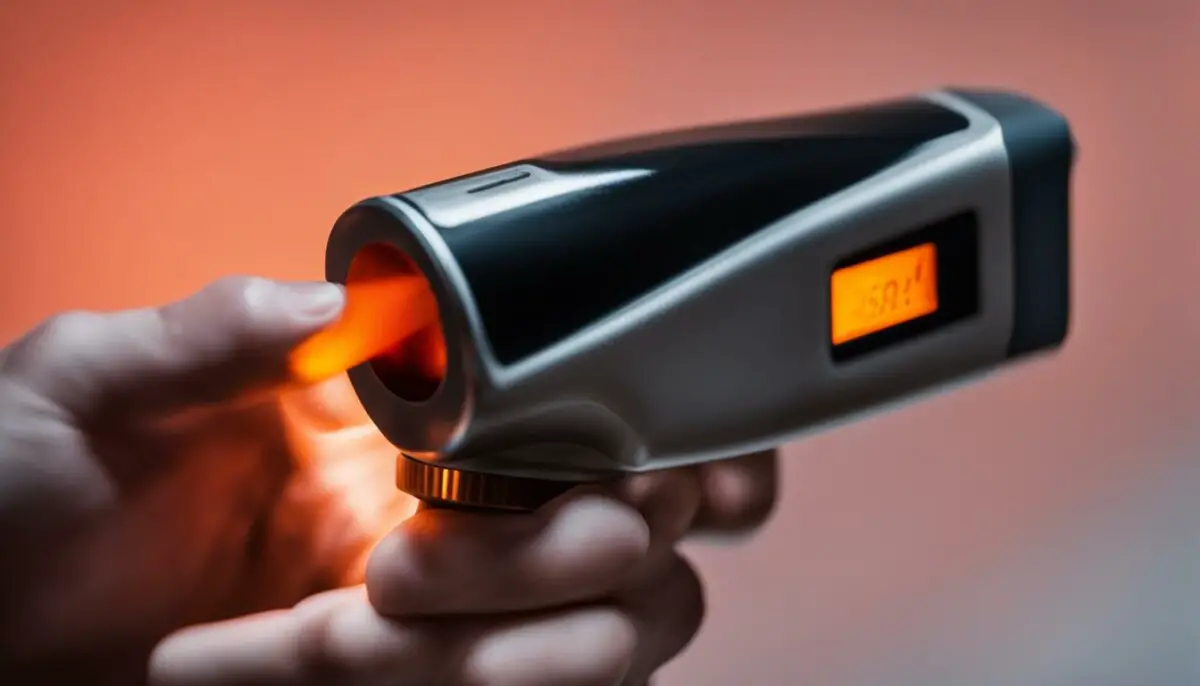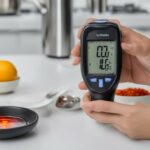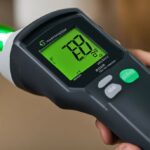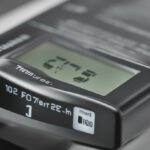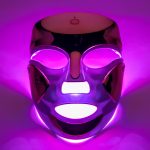Last Updated on 6 months by Francis
Are you wondering why your infrared thermometer is giving you higher readings than expected? You’re not alone. Infrared thermometers, like forehead thermometers, offer a quick and convenient way to measure temperature, but they may not be as accurate as other types of thermometers, such as oral or ear thermometers.
There are several factors that can affect the accuracy of infrared thermometer readings. Wearing headwear, sweat on the forehead, and environmental conditions like direct sunlight or radiant heat can all contribute to higher readings. Additionally, studies have shown that forehead thermometers may not be the best option for use in hospitals or pediatric practice.
So, why does your infrared thermometer read high? Let’s dive into the details and uncover the reasons behind this issue.
Contents
Key Takeaways:
- Infrared thermometers, like forehead thermometers, may provide quick and convenient temperature measurements, but they can be less accurate compared to other types of thermometers.
- Factors such as wearing headwear, sweat on the forehead, and environmental conditions like direct sunlight or radiant heat can affect the accuracy of infrared thermometer readings.
- Forehead thermometers are not ideal for use in hospitals or pediatric practice.
- Following the manufacturer’s instructions for proper use is recommended.
- If consistently obtaining high readings, troubleshooting steps can be taken to ensure proper sensor placement and device maintenance.
Factors Affecting Accuracy of Infrared Thermometers

Infrared thermometers can provide quick and convenient temperature readings, but several factors can affect their accuracy, leading to high readings and potentially inaccurate temperature measurements. Understanding these factors is crucial for obtaining reliable results.
- Wearing headwear or having sweat or dirt on the forehead: These factors can interfere with the infrared thermometer’s ability to detect the body’s infrared radiation and convert it into a temperature reading. It is important to ensure that the forehead is clean, dry, and free from any obstructions before taking a measurement.
- Environmental conditions: Direct sunlight, radiant heat sources, and drafts can also impact the accuracy of infrared thermometer readings. These factors can introduce external heat sources that affect the temperature reading. To minimize their impact, it is recommended to take measurements in a controlled environment, away from direct heat sources or drafts.
By addressing these factors, you can improve the accuracy of infrared thermometer readings and ensure more reliable temperature measurements. However, it is important to note that even with proper precautions, infrared thermometers may still have limitations and may not provide the same level of accuracy as other types of thermometers. It is always advisable to follow the manufacturer’s instructions for proper use and consider using alternative thermometers, such as oral or ear thermometers, for more precise temperature measurements when necessary.
Table: Factors Affecting Accuracy of Infrared Thermometers
| Factors | Impact |
|---|---|
| Wearing headwear or having sweat or dirt on the forehead | Interferes with the detection of infrared radiation and conversion into temperature readings |
| Environmental conditions (direct sunlight, radiant heat sources, drafts) | Introduces external heat sources that affect temperature readings |
Comparison with Other Thermometers
When troubleshooting high readings on an infrared thermometer, it can be helpful to compare its accuracy with other types of thermometers. While infrared thermometers provide quick and convenient temperature measurements, they may not always be the most accurate option. Here’s a comparison with other commonly used thermometers:
1. Oral Thermometers
Oral thermometers are inserted into the mouth to measure body temperature. They are considered one of the most accurate types of thermometers, especially for adults and older children who can hold the thermometer under their tongue for the required time. Unlike infrared thermometers, oral thermometers directly measure the internal temperature of the body, providing more precise readings. However, this method may not be suitable for young children who may struggle to keep the thermometer in their mouth.
2. Rectal Thermometers
Rectal thermometers are specifically designed for measuring body temperature through the rectum. They are often recommended for infants and young children due to their accuracy. Rectal temperature measurements are considered the gold standard for precise temperature readings, as they directly reflect core body temperature. However, rectal thermometers may not be preferred by individuals or parents due to the discomfort or invasiveness of the method.
3. Ear Thermometers
Ear thermometers, also known as tympanic thermometers, measure body temperature by detecting infrared heat radiated from the ear canal. They are commonly used in hospitals and clinical settings for quick and non-invasive temperature measurements. Studies have shown that ear thermometers are more likely to detect fever compared to forehead thermometers in a hospital setting. However, their accuracy can be influenced by factors such as earwax buildup or incorrect positioning of the thermometer in the ear.
While infrared thermometers can be used for general screening purposes, it’s important to understand that they may not provide the same level of accuracy as other types of thermometers. If consistently high readings are obtained with an infrared thermometer, it’s recommended to troubleshoot the device, follow proper usage techniques, and consider using alternative thermometers for more precise temperature measurements.
Limitations of Infrared Thermometers
Infrared thermometers, while convenient for quick temperature measurements, have certain limitations that can affect their accuracy. Understanding these limitations is important to ensure the most reliable temperature readings.
Distance-to-Spot Ratio
The accuracy of infrared thermometers can be influenced by their distance-to-spot ratio. This ratio determines the size of the area being measured, and if the distance is too great, the readings may become less accurate. It is essential to follow the manufacturer’s guidelines regarding the optimal distance for accurate measurements.
Shiny or Reflective Surfaces
Infrared thermometers can be affected by shiny or reflective surfaces, as these materials can reflect or absorb the infrared energy differently. This can lead to inaccurate readings. To mitigate this, it is recommended to apply non-reflective tape or flat paint to the target area, providing a better surface for measurement.
External Temperature Measurement
Another limitation of infrared thermometers is that they measure the external temperature of a person, which may not accurately reflect their internal body temperature. It is important to keep this in mind when using an infrared thermometer for medical or diagnostic purposes, as internal temperature measurements may be more accurate in certain situations.
Types of Thermometers for Accurate Temperature Measurements

When it comes to measuring a person’s temperature accurately, there are different types of thermometers available, each with its own advantages and best practices. By understanding the appropriate use of these thermometers, you can ensure more precise temperature measurements.
Rectal Thermometer
The rectal thermometer is recommended for infants and small children as it provides the most precise readings. To use a rectal thermometer, apply a water-based lubricant to the tip and gently insert it into the rectum. Leave it in place for the recommended time, typically around one minute. This method may be uncomfortable for the child, so it’s important to use caution and follow proper techniques.
Oral Thermometer
For adults or children who can hold a thermometer in their mouth, an oral thermometer is the most accurate option. Place the tip of the thermometer under the tongue and close the mouth. Leave it in place for the recommended time, usually around 30 seconds. It is important to ensure that the mouth remains closed during the measurement to prevent temperature fluctuations.
Ear Thermometer
Ear thermometers can be an effective option for temperature measurements. They are quick and convenient, providing accurate readings in just a few seconds. To use an ear thermometer, gently insert the probe into the ear canal and press the button to initiate the measurement. It is important to follow the manufacturer’s instructions to ensure proper placement and accuracy.
Forehead Thermometer
While forehead thermometers can be used for general screening purposes, they may not provide the most accurate temperature measurements compared to other types of thermometers. However, they can still be useful in certain situations, such as when measuring the temperature of a sleeping child or when contactless measurements are required. To use a forehead thermometer, press the sensor against the forehead and follow the manufacturer’s instructions for the recommended distance and positioning.
| Type of Thermometer | Recommended Use | Advantages |
|---|---|---|
| Rectal Thermometer | Infants and small children | Most precise readings |
| Oral Thermometer | Adults and children who can hold the thermometer in their mouth | High accuracy |
| Ear Thermometer | Quick and convenient measurements | Fast and accurate |
| Forehead Thermometer | General screening and contactless measurements | Convenient and non-invasive |
By choosing the right thermometer for the situation and following proper techniques, you can ensure accurate temperature measurements. Always remember to read and follow the manufacturer’s instructions for each thermometer to achieve the best results.
Importance of Following Manufacturer’s Instructions
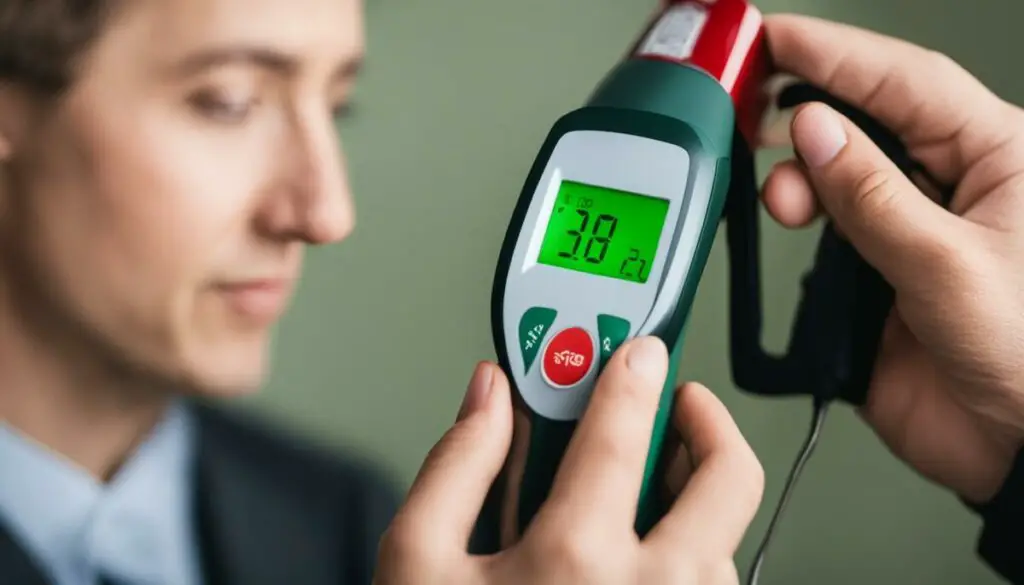
Using a forehead thermometer correctly is essential for obtaining accurate temperature readings. To ensure reliable measurements, it is crucial to read and follow the manufacturer’s instructions provided with the device. These instructions contain valuable insights on the proper usage, positioning, and environmental considerations necessary for accurate readings.
By following the instructions, you can optimize the performance of your forehead thermometer and minimize potential inaccuracies. The manufacturer’s guidelines may include information on the recommended distance between the device and the forehead, correct alignment with the forehead surface, and specific environmental conditions that may affect the accuracy of the readings.
Additionally, some forehead thermometers have built-in features such as lights or indicators that assist in aiming the sensor correctly on the forehead. To ensure accurate measurements, it is important to avoid touching the sensor and keep it clean and dry. Taking the time to familiarize yourself with the manufacturer’s instructions and implementing them correctly can significantly improve measurement accuracy.
“Using a forehead thermometer correctly is essential for obtaining accurate temperature readings.”
Proper Usage for Accurate Results
When using a forehead thermometer, it is important to follow these key steps for optimal accuracy:
- Ensure the forehead is clean and dry before taking a measurement.
- Position the thermometer according to the manufacturer’s instructions, usually aiming at the center of the forehead.
- Maintain the recommended distance between the device and the forehead for accurate readings.
- Avoid any obstructions on the forehead, such as headwear or hair, that may impact measurement accuracy.
- Allow the thermometer to complete its measurement cycle as instructed by the manufacturer.
Minimizing User Error
User error can also contribute to inaccurate readings with a forehead thermometer. It is important to ensure that the person operating the thermometer is familiar with its proper usage and follows the guidelines consistently. Inconsistent usage, incorrect positioning, or failure to follow the instructions provided can lead to unreliable results.
By reading and understanding the manufacturer’s instructions, users can minimize the risk of inaccuracies due to user error. Regular maintenance, such as cleaning the sensor and keeping the device in good condition, is also crucial for accurate measurements.
| Benefits of Following Manufacturer’s Instructions | Consequences of Ignoring Instructions |
|---|---|
|
|
Following the manufacturer’s instructions is crucial for obtaining accurate temperature measurements with a forehead thermometer. By adhering to the guidelines provided, users can ensure optimal performance, minimize inaccuracies, and obtain reliable results.
The Use of Infrared Thermometers during the COVID-19 Pandemic
Infrared thermometers have become a popular tool during the COVID-19 pandemic for screening large groups of people quickly and without physical contact. They provide a convenient and efficient method for temperature screening, allowing organizations to identify individuals who may have an elevated body temperature, which could be a potential symptom of COVID-19.
While infrared thermometers can be useful for general screening purposes, it is important to be aware of their limitations and potential inaccuracies. Factors such as environmental conditions, reflective surfaces, and user techniques can contribute to high readings and affect the accuracy of the measurements. To ensure the most accurate temperature measurements during the pandemic, it is recommended to use infrared thermometers that meet medical and pharmaceutical-grade standards. These thermometers are designed to provide higher accuracy and reliability, albeit at a higher cost.
| Pros | Cons |
|---|---|
| Quick and contactless temperature screening | Potential inaccuracies due to various factors |
| Convenient for screening large groups | Limitations in measuring internal body temperature |
| Can help identify potential COVID-19 symptoms | Accuracy affected by environmental conditions and reflective surfaces |
It is important for organizations and individuals to understand the strengths and limitations of infrared thermometers and to use them appropriately. It is also advisable to follow guidelines and regulations set by health authorities and manufacturers for accurate temperature measurements and to supplement screenings with other measures such as symptom questionnaires and clinical evaluations.
Challenges and Flaws of Infrared Thermometers
Infrared thermometers have gained popularity for their convenience and contactless temperature measurements. However, they come with their own set of challenges and flaws that can affect their accuracy. Understanding these limitations is crucial to ensure reliable temperature readings and avoid unnecessary concerns.
One of the main challenges with infrared thermometers is their sensitivity to distance. The accuracy of these thermometers can be affected if they are not held at the correct distance from the subject. Greater distances between the thermometer and the target area can lead to less accurate readings. It is important to carefully follow the manufacturer’s instructions regarding the proper distance-to-spot ratio for accurate measurements.
“Infrared thermometers have a limited accuracy of ±3 degrees, which can result in false readings indicating fever or hypothermia even when the body temperature is normal.”
Another challenge is the use of laser pointers in some infrared thermometers. It is important to note that the laser is simply a pointer and not used for temperature measurement. The laser helps the user to aim the thermometer correctly, but the actual temperature reading is taken from the infrared sensor.
Additionally, it is crucial to recognize the limitations of infrared thermometers when it comes to measuring internal body temperature. These thermometers only measure the external temperature of the body, which may not always accurately reflect the internal temperature. It is essential to be aware of this when interpreting the results obtained from an infrared thermometer.
| Challenges of Infrared Thermometers | Flaws of Infrared Thermometers |
|---|---|
| Distance sensitivity | Limited accuracy of ±3 degrees |
| Use of laser pointers for aiming | No measurement of internal temperature |
Despite these challenges and flaws, infrared thermometers can still be valuable tools when used correctly and in the right context. When using an infrared thermometer, it is important to take into account the environmental conditions, follow proper techniques, and be aware of their limitations. Understanding these aspects can help ensure more accurate temperature measurements and informed decisions.
Factors Affecting Infrared Thermometer Accuracy
Infrared thermometers provide a quick and convenient way to measure temperature, but their accuracy can be influenced by various factors. Understanding these factors is crucial to obtaining reliable temperature readings. Here are some key factors that can affect the accuracy of infrared thermometers:
- Distance-to-spot ratio: The distance between the thermometer and the object being measured can impact accuracy. Incorrect distances can result in inaccurate readings. It is important to know the recommended distance-to-spot ratio of your thermometer and get close enough to the target area for accurate measurements.
- Reflective surfaces: Shiny or reflective surfaces can interfere with infrared energy absorption or reflectivity, leading to inaccurate readings. Applying non-reflective tape or flat paint to such surfaces can provide a better target for measurement.
- Presence of steam, dust, or dirty lenses: Infrared thermometers may be affected by the presence of steam, dust, or dirty lenses, which can obstruct the accurate measurement of temperature. Keeping the lenses clean and ensuring a clear line of sight can help maintain accuracy.
- Temperature differences: Thermal differences between the thermometer and its surroundings can influence accuracy. When moving between environments with significantly different temperatures, allow the thermometer sufficient time to adjust to the new surroundings before taking measurements.
By considering and addressing these factors, you can improve the accuracy of infrared thermometer measurements and obtain more reliable temperature readings in various settings.
| Factors Affecting Infrared Thermometer Accuracy | Impact on Accuracy |
|---|---|
| Distance-to-spot ratio | Incorrect distances can result in inaccurate readings |
| Reflective surfaces | Shiny or reflective surfaces can interfere with accurate infrared energy absorption or reflectivity |
| Presence of steam, dust, or dirty lenses | Obstructions can prevent accurate temperature measurement |
| Temperature differences | Thermal differences can impact accuracy when transitioning between different environments |
“To obtain more accurate temperature readings with infrared thermometers, it is crucial to consider factors such as the distance-to-spot ratio, presence of reflective surfaces, cleanliness of lenses, and temperature differences. By addressing these factors, users can ensure more reliable measurements in various settings.”
Accurate temperature measurements are essential for various applications, including medical, industrial, and environmental monitoring. Understanding and managing the factors that can affect the accuracy of infrared thermometers can help ensure the reliable and precise measurement of temperature.
Tips for Accurate Infrared Thermometer Measurements
Obtaining accurate temperature measurements with an infrared thermometer is crucial for reliable results. Here are some tips to ensure accuracy:
- Know the distance-to-spot ratio: Each infrared thermometer has a specific distance-to-spot ratio that indicates the size of the area being measured. It’s important to understand this ratio and get close enough to the target area for accurate readings.
- Address reflective surfaces: Shiny or reflective surfaces can interfere with infrared thermometer accuracy by reflecting or absorbing the infrared energy differently. Applying non-reflective tape or flat paint to these surfaces can provide a better target for measurement.
- Keep the lens clean: Dust, steam, and dirty or scratched lenses can affect the accuracy of infrared thermometer readings. Therefore, it’s essential to keep the lens clean and free from any obstructions. Regularly wipe the lens with a soft, lint-free cloth to maintain accuracy.
“Understanding the distance-to-spot ratio and addressing reflective surfaces can greatly enhance the accuracy of infrared temperature measurements.” – Thermometer Expert
Additionally, taking some general precautions can also improve accuracy. Allow the thermometer to adjust to the temperature of its surroundings when moving between different environments. This will help minimize any temperature differences that could impact accuracy. By following these tips, you can ensure more accurate and reliable temperature measurements with your infrared thermometer.
| Tips for Accurate Infrared Thermometer Measurements | Benefits |
|---|---|
| Know the distance-to-spot ratio | Ensures accurate readings by understanding the size of the measured area |
| Address reflective surfaces | Prevents inaccurate measurements caused by reflection or absorption of infrared energy |
| Keep the lens clean | Maintains accuracy by preventing interference from dust, steam, or dirty lenses |
Conclusion
In conclusion, while infrared thermometers offer convenience and quick temperature measurements, they may not always provide the most accurate readings compared to other thermometers. Factors such as environmental conditions, reflective surfaces, and user techniques can contribute to high readings and impact the accuracy of measurements. It is important to be aware of these factors and take appropriate precautions.
Following the manufacturer’s instructions for proper usage is crucial in obtaining accurate temperature readings. Each infrared thermometer model may have specific guidelines, including recommended distances, positioning, and environmental considerations. Adhering to these instructions can help improve the accuracy of measurements.
If consistently high readings are obtained with an infrared thermometer, troubleshooting steps such as cleaning the sensor and ensuring proper placement on the forehead should be taken. Understanding the strengths and limitations of infrared thermometers can aid in obtaining more accurate temperature measurements.
FAQ
Why does my infrared thermometer read high?
Factors such as wearing headwear, sweat on the forehead, and environmental conditions like direct sunlight or radiant heat can affect the accuracy of infrared thermometer readings.
What can cause high readings on an infrared thermometer?
Wearing headwear, having sweat or dirt on the forehead, direct sunlight, radiant heat sources, or drafts can contribute to high readings on infrared thermometers.
How do infrared thermometers compare to other types of thermometers?
Studies have shown that ear thermometers are more likely to detect fever compared to forehead thermometers in a hospital setting. Rectal thermometers are recommended for precise temperature measurements.
What are the limitations of infrared thermometers?
Infrared thermometers measure external temperature and may not accurately reflect internal body temperature. They can also be affected by distance, shiny or reflective surfaces, and environmental conditions.
What are the best types of thermometers for accurate temperature measurements?
Rectal thermometers are recommended for infants or small children, while oral thermometers are the most accurate for adults or children who can hold the thermometer in their mouth.
How important is it to follow the manufacturer’s instructions when using an infrared thermometer?
It is crucial to read and follow the manufacturer’s instructions for proper usage, including recommended distance, positioning, and environmental considerations, to obtain accurate temperature readings.
How are infrared thermometers used during the COVID-19 pandemic?
Infrared thermometers are used for quick and contactless temperature screening. However, it is important to be aware of their limitations and potential inaccuracies.
What challenges and flaws do infrared thermometers have?
Infrared thermometers can be affected by factors such as the distance between the thermometer and the subject, the use of laser pointers, and their limited accuracy of ±3 degrees.
What factors can affect the accuracy of infrared thermometer measurements?
Factors such as distance-to-spot ratio, shiny or reflective surfaces, steam, dust, dirty or scratched lenses, and temperature differences can impact the accuracy of infrared thermometer readings.
How can I make accurate measurements with an infrared thermometer?
Tips for accurate measurements include knowing the distance-to-spot ratio, using non-reflective surfaces for shinier objects, avoiding steam and dirt, and allowing time for the thermometer to adjust to its surroundings.

